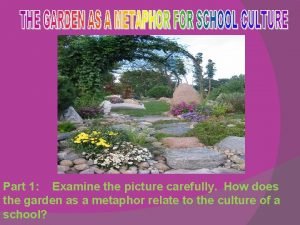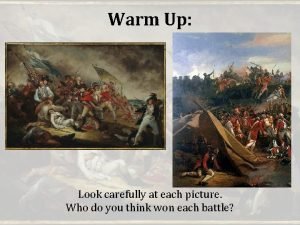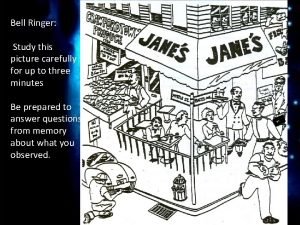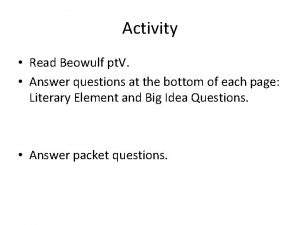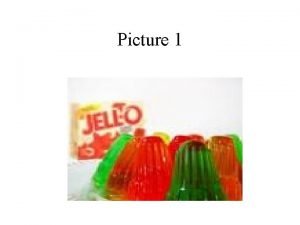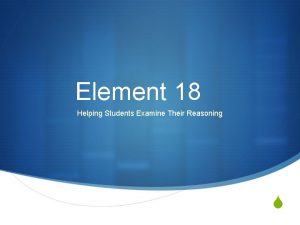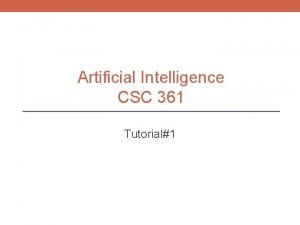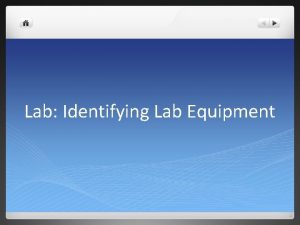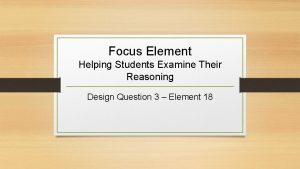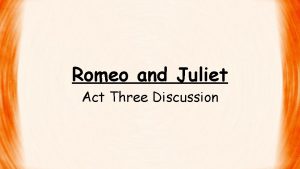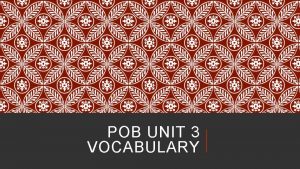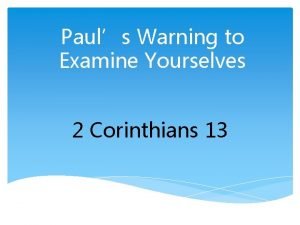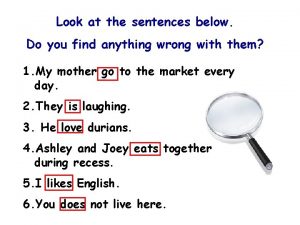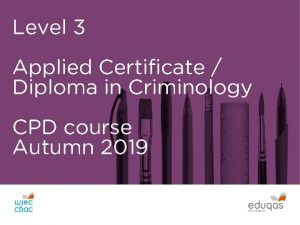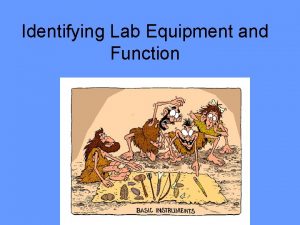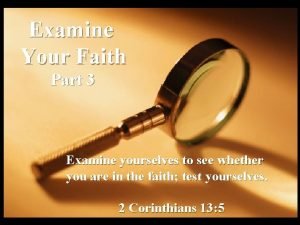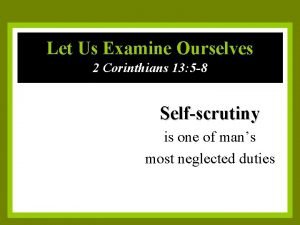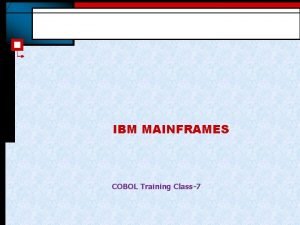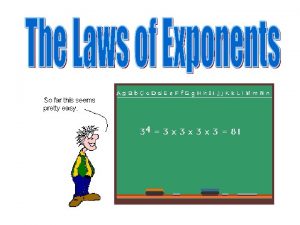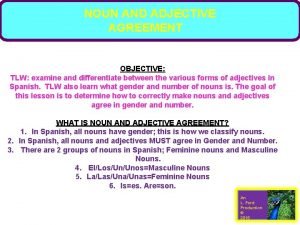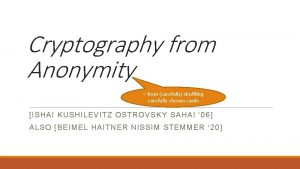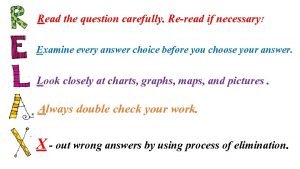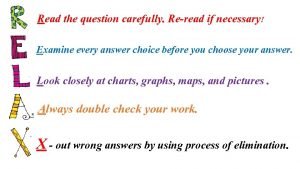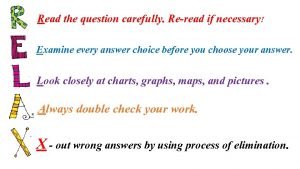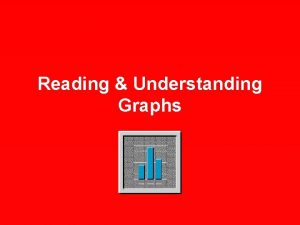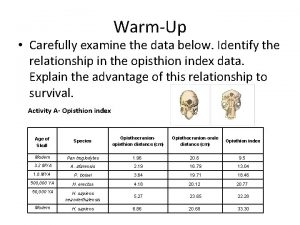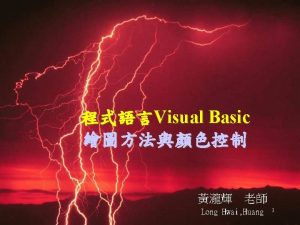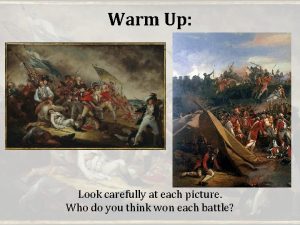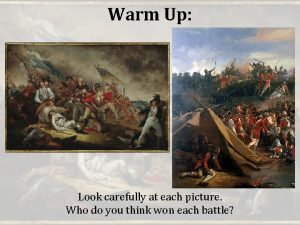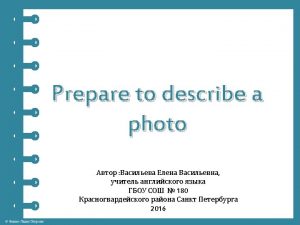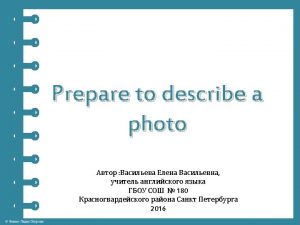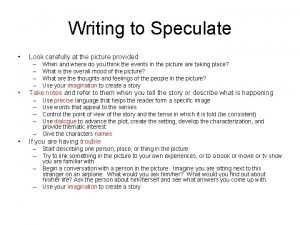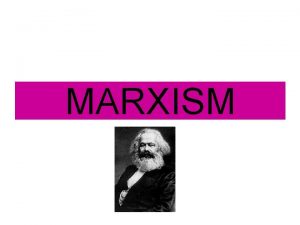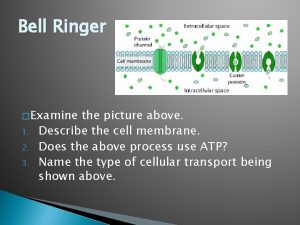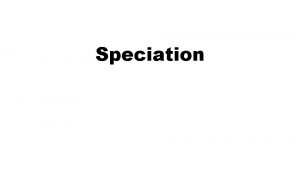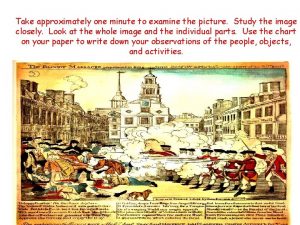Part 1 Examine the picture carefully How does
































- Slides: 32

Part 1: Examine the picture carefully. How does the garden as a metaphor relate to the culture of a school?

Part 2: What are the implications for student achievement?

I

Objectives These two sessions are designed to enhance participants’ understanding of how to better meet the needs of different learners. Participants will 1. examine the characteristics of a differentiated classroom; 2. learn how to frame instruction around concepts and essential understandings; 3. identify techniques for differentiating content, process, interest, and learning profiles; 4. reflect on their beliefs and practices relative to differentiation; 5. read analyze examples of differentiated learning activities; and 6. design a lesson plan that encompasses one or more differentiated strategies for implementation in their classrooms. II

Have you ever… provided several extra examples for a student who doesn’t understand a concept after just two? III

Have you ever… drawn upon your knowledge of a student's background to construct an analogy that helps her understand the concept you are teaching? III

Have you ever… encouraged a student to use one of several other methods to learn his content vocabulary after he experiences frustration using flash cards alone? III

Have you ever… noticed a student who is normally engaged with a topic that excites her is not and taken her aside for a private conversation to quietly ask her if something is bothering her this day? III

Have you ever… allowed a student to redo an assignment after giving corrective feedback? III

Rick Wormeli on Differentiated Instruction "Differentiated instruction is highly effective practice. Students learn more with it than without it. " "We assess students as they learn, then we respond to the insights generated by that data, and we adjust instruction accordingly. If differentiation seems like common sense, it is. " "To knowingly omit differentiated instruction from our classroom instruction is a willful act of educational malpractice. " Rick Wormeli is a long-time teacher, consultant, and writer living in Herndon, Virginia. E-mail: rwormeli@cox. net. Quotes from Middle Ground (October 2011) III

IV Teachers Can Differentiate Content Process Product According to Students’ Readiness Interest Learning Profile Adapted from The Differentiated Classroom: Responding to the Needs of All Learners (Tomlinson, 1999). 11

IV 12

Teachers can differentiate at least four classroom elements: Ø Content--what the student needs to learn or how he/she will access the information Ø Process--activities in which the student engages to make sense of the information and master it Ø Products--culminating projects in which the student rehearses, applies or extends what he or she has learned Ø Learning Environment--the way the classroom looks and feels Excerpted from Tomlinson, C. A. (August 2000) Differentiation of Instruction in the Elementary Grades, ERIC Digest, ERIC Clearinghouse on Elementary and Early Childhood Education IV

Differentiating Content Ø Ø Ø Using reading materials at different reading levels Putting text on tape Using spelling or vocabulary lists at readiness level of students Presenting information through visual and auditory means Using reading buddies Meeting with small groups to re-teach ideas or skills for struggling learners or extend the thinking or skills of advanced learners Excerpted from Tomlinson, C. A. (August 2000) Differentiation of Instruction in the Elementary Grades, ERIC Digest, ERIC Clearinghouse on Elementary and Early Childhood Education IV

Differentiating Process Ø Ø Ø Using tiered activities--all learners working with same understandings and skills, but with different levels of support or challenge Creating interest centers that encourage students to explore parts of the class topic of particular interest to them Providing agendas--task lists containing whole class work and work addressing individual needs of students Providing manipulatives or hands-on materials Varying length of time to complete tasks Excerpted from Tomlinson, C. A. (August 2000) Differentiation of Instruction in the Elementary Grades, ERIC Digest, ERIC Clearinghouse on Elementary and Early Childhood Education IV

Differentiating Products Giving options on how to express required learning (make a mural, write a letter, create a puppet show, etc. ) Ø Using different rubrics to match and extend students’ skills levels Ø Allowing students to work alone or in groups to complete product Ø Encouraging students to create own product as long as it contains the required elements Ø Excerpted from Tomlinson, C. A. (August 2000) Differentiation of Instruction in the Elementary Grades, ERIC Digest, ERIC Clearinghouse on Elementary and Early Childhood Education IV

IV Differentiated Learning Environment Allowing for places to work quietly without distraction, as well as places for students to work collaboratively Ø Setting clear guidelines for independent work Ø Developing routines for students to get help when teacher is busy working with other students Ø Allowing for those students who need to move around when learning, while others need to sit quietly Ø Excerpted from Tomlinson, C. A. (August 2000) Differentiation of Instruction in the Elementary Grades, ERIC Digest, ERIC Clearinghouse on Elementary and Early Childhood Education


Video Clip (math classroom) http: //www. youtube. com/watch? v=U 6 lrn. AZxji. Q&feature=related As you view the video, look for evidence of Ø Differentiated Instruction Ø Evidence of student-centered learning Ø Benefits of group work. V

According to authors, Gregory and Chapman, a differentiated Classroom must have and be: Ø Ø Ø Ø Ø Safe Nurturing Encourages Risk Taking Stimulating Complex Challenging Team/Class Building Norms Multi-sensory Collaborative V

Why Use Cooperative Small Groups? DI says that environment must be: Collaborative -Team & Class Building - Stimulating Cooperative Small Group Work is all of the above. Research says: “Cooperative arrangements are superior to individualistic structures on a variety of outcome measures, generally showing higher achievement, higher-level reasoning, more frequent generation of new ideas and solutions, and greater transfer of what is learned from one situation to another. ” (Barkley, et al, 2005: p. 17 -18) “ 61% of the cooperative-learning classes achieved significantly higher test scores than the traditional classes by stressing group goals and individual responsibility” (Slavin, 1991) Students in cooperative-learning groups were more willing to ask the teacher questions than those in traditionally taught classrooms. (Williamson and Rowe, 2002) Students who are engaged in cooperative learning: have more self-esteem (Johnson et al. , 1998, Slavin, 1991): a very important consideration with female and minority students. V

V Why Does Cooperative Learning Work? Cooperative learning exercises enhance important skills including: Ø Ø Ø Using the language of the discipline Explaining, providing feedback, understanding alternative perspectives Discovering patterns and relationships Organizing and synthesizing information Developing strategies and analysis (Barkley, Cross and Major, 2005)

How Do I get started using cooperative learning small groups? 1) Arrange the room so students can sit in groups facing each other. 2) Decide on the size of the groups. Three to four students per group is suggested. 3) Assign students to groups. Formal groups- Consider having groups of mixed: Ø race Ø gender Ø learning styles Ø abilities On-The-Fly groups: Ø 1, 2, 3 numbering system Ø Give students a number, then group by “types” of numbers Make a group of prime numbers, a group representing multiples of five or six, numbers within a given range, even or odd numbers. Ø Change groups periodically V

Roles and Responsibilities of Small Group Members Potential Project Roles Ø Ø Leader/Editor: This student is in charge of organizing the final product of the project, be it a paper, a presentation, etc. That doesn't mean technical details, but of making sure that the project meets the standards set out by the instructor (often as a rubric), plus any extras stipulated by the group. These standards generally include punctuality and completeness. Recorder/Secretary: This person takes notes whenever the group meets and keeps track of group data/sources/etc. This person distributes these notes to the rest of the group highlighting sections relevant for their parts of the project. Checker: Someone needs to double-check data, bibliographic sources, or graphics for accuracy and correctness. Spokesperson/Press Secretary/Webmaster: This person would be responsible for the technical details of the final product and would be ready to summarize the group's progress and findings to the instructor and to other groups. V

Roles and Responsibilities of Small Group Members Possible Discussion Roles Ø Ø Ø Facilitator/Encourager: This student gets discussion moving and keeps it moving, often by asking the other group members questions, sometimes about what they've just been saying. Timekeeper: Someone needs to make sure that the group stays on track and gets through a reasonable amount of material in the given time period. Summarizer: Every so often (perhaps once per question for a list of questions, or at the end for one question), this student provides a summary of the discussion for other students to approve or amend. Reflector: This student will listen to what others say and explain it back in his or her own words, asking the original speaker if the interpretation is correct. Elaborator: This person seeks connections between the current discussion and past topics or overall course themes. http: //serc. carleton. edu/introgeo/cooperative/roles. html V

V

VI Jigsaw Strategy What is Differentiated Instruction? BLUE The Differentiated Instruction model is based on effective educational practice (research base for DI) and is framed around several key elements. Eight Lessons Learned -- A Differentiation Journey RED Basic points to help create a solid foundation for differentiation Methods of Differentiated Instruction Bloom's Taxonomy Types of Products Sharing Products GREEN

RAFT VII

Penultimate Closure Card 1. What is something that you know that you didn’t know before about differentiation? 2. What is something that you are willing to try because of what you experienced today? 3. What is something in terms of differentiation that you need to know more about? VIII

Objectives These two sessions are designed to enhance participants’ understanding of how to better meet the needs of different learners. Participants will 1. examine the characteristics of a differentiated classroom; 2. learn how to frame instruction around concepts and essential understandings; 3. identify techniques for differentiating content, process, interest, and learning profiles; 4. reflect on their beliefs and practices relative to differentiation; 5. read analyze examples of differentiated learning activities; and 6. design a lesson plan that encompasses one or more differentiated strategies for implementation in their classrooms. II

Questions, Comments, and Evaluation Next PD Session Topic: Differentiated Instruction and Managing Small Group Instruction Part II, Wednesday, April 18 th IX

Resources Ø Rick Wormeli is a long-time teacher, consultant, and writer living in Herndon, Virginia. E-mail: rwormeli@cox. net. Quotes from Middle Ground (October 2011) Ø The Differentiated Classroom: Responding to the Needs of All Learners (Tomlinson, 1999). Ø Excerpted from Tomlinson, C. A. (August 2000) Differentiation of Instruction in the Elementary Grades, ERIC Digest, ERIC Clearinghouse on Elementary and Early Childhood Education Ø Thomlison and Imbeau, 2010 Ø http: //serc. carleton. edu/introgeo/cooperative/roles. html Ø http: //www. youtube. com/watch? v=U 6 lrn. AZxji. Q&feature=related Ø Gregory and Chapman Ø Barkley, Cross and Major, 2005
 Analyze the picture carefully and tell something about it
Analyze the picture carefully and tell something about it Look at the image and answer the following questions
Look at the image and answer the following questions Carefully look at each picture
Carefully look at each picture Study the picture carefully
Study the picture carefully Look at the pictures carefully
Look at the pictures carefully Why does beowulf plan the tower so carefully?
Why does beowulf plan the tower so carefully? Picture 1 picture 2
Picture 1 picture 2 Conclusion on ethics
Conclusion on ethics How to help students examine their reasoning
How to help students examine their reasoning Playing a decent game of table tennis (ping-pong).
Playing a decent game of table tennis (ping-pong). What is the relationship between language and thought
What is the relationship between language and thought The rivals as a comedy of manners
The rivals as a comedy of manners Let a man examine himself
Let a man examine himself Hand lens
Hand lens Helping students examine their reasoning
Helping students examine their reasoning Linear automobile depreciation
Linear automobile depreciation Examine mercutio grave man line
Examine mercutio grave man line To examine in detail for a purpose
To examine in detail for a purpose Examine yourselves to see if you are in the faith
Examine yourselves to see if you are in the faith Look at the sentences below
Look at the sentences below Wjec criminology unit 3 answers
Wjec criminology unit 3 answers Used to hold or lift specimens
Used to hold or lift specimens Examine your faith
Examine your faith Whats community development
Whats community development Standard time and normal time
Standard time and normal time Examine
Examine Umbraco examine search example
Umbraco examine search example Let us examine ourselves
Let us examine ourselves Ilboabn0
Ilboabn0 Examine the power 53
Examine the power 53 Objective adjective
Objective adjective What are the six parts of the plant
What are the six parts of the plant Hát kết hợp bộ gõ cơ thể
Hát kết hợp bộ gõ cơ thể
